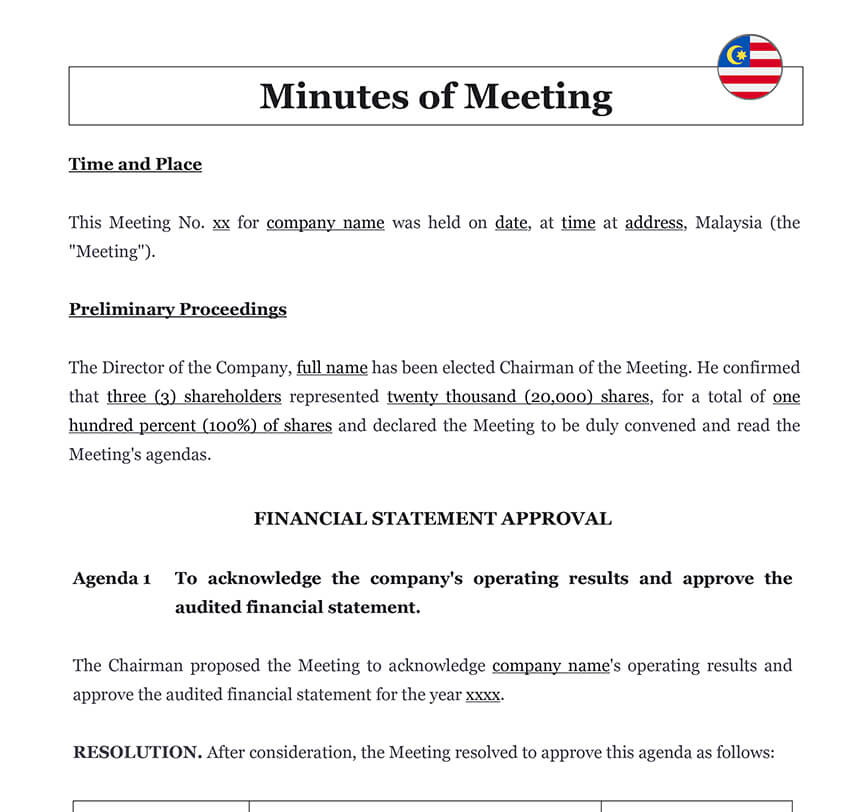Ready to use legal template
Drafted by experienced lawyers
Compliant with Malaysian law
Ready to use legal template
Drafted by lawyers
Compliant with Malaysian law
Home › Business contracts › Minutes of Meeting
Learn more about Minutes of Meeting in Malaysia
In Malaysia, general meetings of shareholders are essential to the management of your business. They serve as the decision-making centre for your company’s internal and external relations. The most important general meeting is the annual ordinary general meeting, which must be held every year. Every Malaysian company is required to hold this general meeting at least once a year. Of course, other general meetings may be called during the year to amend the articles of association. These are known as extraordinary general meetings. Given the complexity of taking minutes in Malaysia, Themis Partner offers a business model for your company. You can also download the Notice of Meeting Letter required to invite shareholders and directors to the AGM/EGM.
Table of contents
What are Minutes of Meeting?
Meeting minutes are notes taken during an annual general meeting or extraordinary. They outline the important subjects that will be discussed, motions that will be submitted or voted on, and activities that will be carried out. Meeting minutes are often taken by a designated member of the organization. Their job is to keep an accurate record of what happened during the meeting.
What is a General Meeting?
An Annual General Meeting (AGM) is a yearly gathering of interested shareholders of a firm. At an AGM, the company’s directors deliver an annual report to shareholders that includes information on the company’s performance and strategy. The annual general meeting (AGM) is held for shareholders to debate any issues concerning the company’s affairs and operations, as well as to engage with the company’s directors. The annual shareholders meeting is another name for the AGM. Shareholders having voting rights vote on current topics such as board of director nominations, executive remuneration, dividend distributions, and auditor selection.
What is included in the Meeting Minutes?
Meeting minutes generally include the following information:
| ➤ The date, place and hour of the meeting |
| ➤ Attendees' names, as well as those who were unable to attend |
| ➤ Acceptance of, or changes to, the minutes of the previous meeting |
| ➤ Activities carried out or agreed upon |
| ➤ Following steps |
| ➤ Election outcomes |
| ➤ Accepted or rejected motions |
| ➤ New venture |
| ➤ The next meeting date and time |




